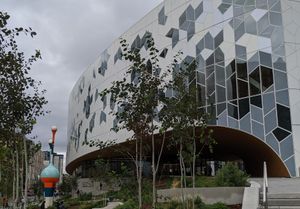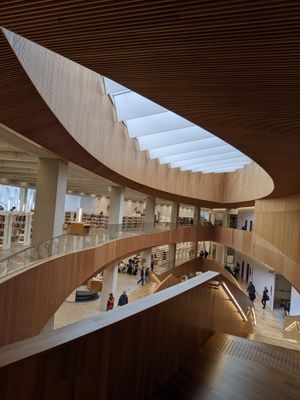I have been using these three ‘switches’ as contextual background in presentations for a while:
Consumer switch
Then: More investment in business/education environments.
Now: More investment in consumer environments.
It used to be the case that the computer and communications capacities we had at work or in college exceeded those available to us in personal or family settings. Now this is no longer the case. Consumer sites like Amazon or Etsy set expectations for services and we have multiple computing and communications devices. Indeed, educational and work settings now often lag the consumer space (look no further than the library website). This is a significant change and will continue given the level of investment in the consumer space.
Workflow switch
Then: Expect workflows to be built around my service.
Now: Build services around workflows
Much of our information creation and use is now carried out on the network. This may be assisted by the prefabricated workflow supported by a course management system, a lab notebook, or a pre-print archive, for example. Or it may be assisted by the bricolage of tools we use to find and organize information resources: citation management services, bookmarks, RSS readers, twitter clients, and so on. People have varying levels of sophistication of support within an overall trend towards adopting research and learning workflows on the network. What this means is that while users may once have built their workflows around the library, now, the library needs to consider how to build its services around the user workflow, to be available where its readers are doing their work. Think for example of Netflix which works hard to make itself available in as many ways as make sense for its users. We can get a DVD. We can also stream to a PC, an xbox, an app on the iPad, and so on.
Attention switch
Then: Resources scarce; attention abundant.
Now: Attention scarce; resources abundant.
Library users now have many opportunities to meet their information needs, and they have many demands on their attention. No single site is the sole focus of attention and convenience is important.
Share
More from LorcanDempsey.net



